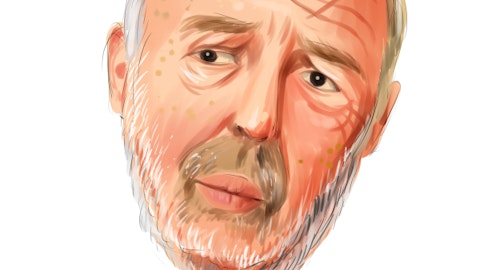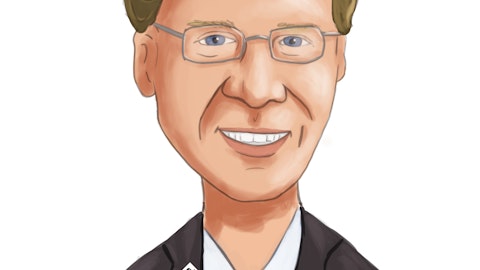We anticipate the margin will compress in the high 240s in the fourth quarter and potentially maintain a similar level in the first quarter of 2024. We will look for 5 to 7 basis points of margin expansion per quarter for the rest of 2024. This expectation is predicated on one more Fed bump of 25 basis points before year end and then no further increases or any rate cuts throughout 2024. Noninterest expense increased $3.3 million or 5% compared to the linked quarter and $6.7 million or 10% compared to the prior year quarter. As I stated earlier in the call, this quarter included a one-time $8.2 million pension settlement expense related to the termination of our defined benefit plan and the previous quarter included $1.9 million of severance related expense associated with staffing adjustments.
So excluding these items from the current and previous quarter, total noninterest expense declined by $2.9 million or 4% driven by lower expenses associated with salaries, employee benefits expense and market. Excluding the pension settlement costs, third quarter expenses totaled approximately $64.3 million. The fourth quarter run rate of expenses will include some additional spends related to our technology initiatives as certain capitalized costs and related current period costs are expected to be recognized. 2024 expense levels are currently being evaluated as part of our annual planning process with the current expectation for overall core expenses excluding the pension and severance related costs to increase by no more than 3% to 4% on a year-over-year basis.
The non-GAAP efficiency ratio was 60.91 for the third quarter of 2023 compared to 60.68 for the second quarter of 2023 and 48.18 for the prior year quarter. Both GAAP and non-GAAP efficiency ratios have been negatively impacted by the declines in net revenue and growth in noninterest expense as we continue to invest in the future. So while the recognition of our technology investments comes at an inopportune time, when revenue is under pressure, we will be well positioned to grow using newly introduced digital capabilities as the rate environment improves, the shape of the yield curve normalizes and the economy expands. So let’s shift to credit quality. Overall credit quality remained stable as the ratio of nonperforming loans to total loans was 46 basis points compared to 44 basis points last quarter.
These level of nonperformers compared to 40 basis points for the prior year quarter and continue to indicate stable credit quality during this period of economic uncertainty. At September 30, nonperforming loans totaled $51.8 million compared to $49.5 million at June 30 and $44.5 million at September 30, 2022. Total net charge offs for the current quarter amounted to $100,000 compared to $1.8 million for the second quarter of 2023 and $0.5 million of net recoveries in the third quarter of 2022. The allowance for credit losses was $123.4 million or 1.09% of outstanding loans and 238% of nonperforming loans compared to $120.3 million or 1.06% of outstanding loans and a coverage ratio of 243% at the end of the previous quarter. At September 30, the company had a total risk based capital ratio of 14.85, a common equity Tier 1 risk based capital ratio of 10.83, a Tier 1 risk based ratio of the same 10.83, and a Tier 1 leverage ratio of 9.5% and all of these ratios remain in excess of mandated minimum regulatory requirements.
And before we move to your questions, I’d like to acknowledge a leadership announcement that we made last month. Our Chief Financial Officer, Phil Mantua, will retire from the Bank at the end of March 2024. As you all know on the call, throughout Phil’s 24-year tenure he has played an instrumental role in our growth and we all want to extend our sincere appreciation and congratulations to Phil and we are actively interviewing for his successor, so please stay tuned. And with that, Jordan, we can move to our first question.
Q – Russell Gunther: Hey, good afternoon, guys.
Daniel Schrider: Hi, Russell.
Philip Mantua: Hey, Russell.
Russell Gunther: Hi. I wanted to start on loan balances. So I hear you on the funded production for the next couple quarters down a bit from where we’ve been in the past few, what are the guideposts we should be looking for in terms of when you might be able to hit the switch to more net loan growth. Deposits are improving, wholesale funding is coming down, but what more do we need to see?
Daniel Schrider: Yes, Russell, this is Dan and Phil might chime in as well. You know the last couple of quarters we’ve kind of targeted funded loan production to kind of match runoff as we were working on improving the liquidity position which we’ve done. Our appetite for funded loan production is higher than that 150 now. I think it’s really more of a function of demand and demand that is rationally priced. So we could probably today move to $250 million in funded production, which would net out at about $100 million of growth a quarter. But demand, the uncertainty in the economy is really soft in demand and there are still some players on the smaller bank side that are not pricing commensurate with today’s yield curve. And so we’re picking our spots and as soon as we see availability in the market, we’re prepared today to increase the funded loan production.
Russell Gunther: Okay, that’s very helpful color Dan, thank you. Just switching gears to the margin, I appreciate the outlook there and given the higher state of funding to date, how would you think about the new, absence of Fed hike and then kind of similarly a question, what do rate cuts mean to you and I know that that’s not something you’re currently contemplating?
Philip Mantua: Yes, Russell, this is Phil. I don’t know that that next anticipated 25 basis point move really or absence thereof really makes a whole lot of difference in our current thinking about where the NIM goes in the next quarter or two. We have already just in terms of now having experienced some nice pickup in growth and growth in categories that we would like to see on the deposit side, pull back on some of the rates that we’re currently offering on the high end. So for example, we have been running a 5.5% CD offering I think it was an 8-month CD for a number of months. We’ve pulled that back completely and other things by at least 50 basis points to test to see whether or not we can try to preserve a little bit of margin here even in the face of the possibility of the of the Fed making that move.
So either way, I think that the guidance here into that high 240s takes kind of all of that into consideration and then from the standpoint of looking into 2024 as Dan mentioned in his comments, without anything else going on from the Fed standpoint, 5 to 7 basis points in pick up certainly that can be accelerated when and if they decide to cut rates because I think we would be pretty quick to try to follow that downward trend. And then then that expansion might be more like double what we suggested 5 to 7 being more like 10 to 15. And I think we’ve commented on that in the past as it relates to a margin pickup quarter-over-quarter. Like what we saw on the way up. Depends on how quickly they cut and what chunks they cut on the way down, which probably clearly won’t be as nearly as aggressive as what we saw on the way up.
Russell Gunther: All right, Phil, thank you. And then just last one for me on the expense side of things, sorry if I missed it, but your thoughts on 4Q, I mean great result this quarter getting the cost saves. Just what type of step up do you expect to see from the digital transformation that comes online? And I know you’re working through 2024, but just bigger picture, does this tech then step you up beyond perhaps just an inflationary growth rate or how should we directionally think of noninterest expense going forward?




